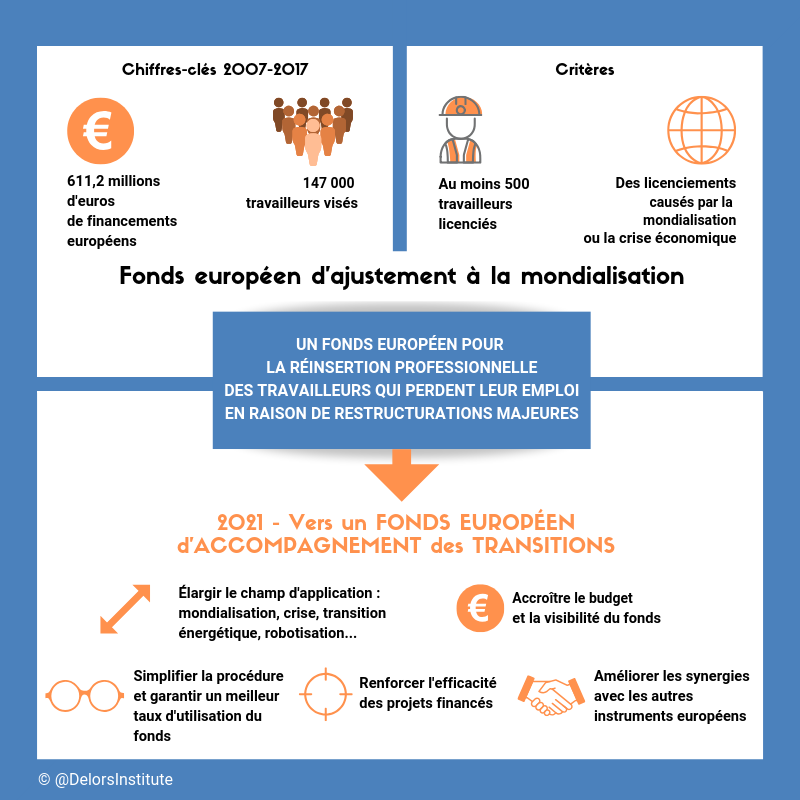Vers un fonds européen d’accompagnement des transitions
Depuis 2007, l’UE dispose d’un Fonds européen d’ajustement à la mondialisation (FEM) qui lui permet de cofinancer, avec les États membres, des politiques visant à faciliter le retour vers l’emploi des travailleurs ayant perdu leur travail en raison de restructurations majeures causées par la mondialisation.

Jusqu’à fin 2017, ce fonds a visé 147 000 travailleurs européens. Néanmoins, malgré un budget relativement faible, ce fonds a été sous-utilisé : seuls 15% de son plafond de dépenses – soit 611 millions d’euros – ont été alloués. Cela s’explique par des critères d’accès au fonds trop restrictifs, des procédures trop longues ou encore un manque de visibilité du fonds. De plus, son efficacité est difficile à mesurer dû à un manque de données. Huit pays de l’UE n’ont jamais eu recours à ce fonds.
Si le FEM n’a pas atteint son potentiel au cours des onze dernières années, ce fonds n’est pas pour autant à abandonner. Au contraire, les profondes et rapides mutations en cours dans nos économies ainsi que les interrogations politiques sur la valeur ajoutée propre à l’action européenne appellent à libérer tout le potentiel de ce fonds. La négociation en cours du prochain cadre financier pluriannuel de l’UE pour 2021-2027 offre aux décideurs européens l’occasion de doter l’UE d’un véritable « fonds européen d’accompagnement des transitions ».
Dans ce Policy Paper, Sofia Fernandes, chercheuse senior à l’Institut Jacques Delors, et Justine Daniel, assistante de recherche à l’Institut Jacques Delors, présentent, à partir d’une analyse du fonctionnement et des résultats du FEM, un ensemble de recommandations pour ce nouveau fonds :
- un champ d’application élargi à toute restructuration majeure liée non seulement à la mondialisation mais aussi à d’autres transitions en cours – telles que la robotisation, la numérisation de l’économie et la transition énergétique – susceptibles de détruire certains emplois existants ;
- une simplification de la procédure et des critères d’accès moins restrictifs pour renforcer le taux de recours au fond ;
- une efficacité accrue des projets de retour à l’emploi financés par le fonds ;
- un budget fortement augmenté et une meilleure visibilité du fonds ;
- des synergies renforcées avec les autres instruments européens.






